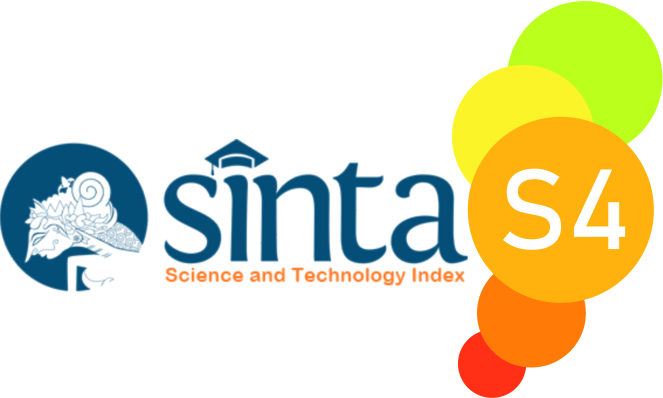Dance Education and Training Intensity at the Rangkiang Palito Dance Studio in Nagari Sungai Sariak, Padang Pariaman Regency
 ), Irmawita Irmawita(2),
), Irmawita Irmawita(2), (1) Universitas Negeri Padang
(2) Universitas Negeri Padang
 Corresponding Author
Corresponding Author
DOI : https://doi.org/10.24036/spektrumpls.v2i4.107157
Full Text:
 Language : en
Language : en
Abstract
This research motivated by the implementation of educational learning and dance training at Sanggar Tari Rangkiang Palito in Nagari Sungai Sariak, Kabupaten Padang Pariaman. This study aimed to know the intensity of dance education and training at Sanggar Tari Rangkiang Palito. These are included; implementation learning, learning strategy, learning curriculum, and learning benefits. This study is quantitative research called quantitative descriptive. The population in this study is all fostered citizens of the dance training who joined at Sanggar Tari Rangkiang Palito in Nagari Sungai Sariak, Kabupaten Padang Pariaman, which totaling 30 members. And they all are the sample in this study. Saturated sample method uses to set the sample, where all of the members as the sample. This study using a questionnaire is a data collection technique, as the data collection tool is questionnaire guidelines. The analysis technique using a Linkert scale. This research’s covered showing that (1) education implementation activities and dance training have good implanted, (2) learning strategy and dance training have clarified good category, (3) educational learning curriculum and dance training have well organized, (4) the benefits of educational learning and dance training for fostered citizens get very high hope and benefits about educational and dance training result at Sanggar Rangkiang Palito in Nagari Sungai Sariak Kabupaten Padang Pariaman. Furthermore, the suggestion by the researcher is expected to Sanggar Tari Rangkiang Palito in Nagari Sungai Sariak always pays attention to education implementation activities, learning strategies, learning curriculum, learning benefits for education and dance training so that fostered citizens always get the skills which appropriate to their talents. For the further researchers is expected to find another variable related to training and education intensity.
Keywords: Intensity, Dance Studio
References
Arikunto, S. (2006). Manajemen Penelitian. Jakarta: Rineka Cipta.
Arikunto, S. (2010). Prosedur Penelitian: Suatu Pendekatan Praktik. Jakarta: Rineka Cipta.
Hadie, H. R. (2015). Pengelolaan Seni di Bale Seni Ciwasiat Pandeglang Banten. Universitas Pendidikan Indonesia. Retrieved from http://repository.upi.edu/17047/
Marzuki, S. (2012). Pendidikan Nonformal. Bandung: PT. Rordakarya.
Presiden Republik Indonesia. Undang-Undang Republik Indonesia Tentang Sistem Pendidikan Nasional, Pub. L. No. 20 (2003). Indonesia. Retrieved from https://www.unpad.ac.id/wp-content/uploads/2012/10/UU20-2003-Sisdiknas.pdf
Sanapiah, F. (2007). Pendidikan Luar Sekolah Menjawab Tugas Mulia Mengisi Pembangunan. Jakarta: Direktorat Jenderal Pendidikan Nonformal.
Sudjana, D. (2008). Evaluasi Program Pendidikan Luar Sekolah (2nd ed.). Bandung: Remaja Rosdakarya.
Sugiyono. (2009). Metode Penelitian Administrasi Bandung. Bandung: Alfabeta.
Sunarti, V. (2014). Peranan Pendidikan Luar Sekolah dalam Rangka Mitigasi Bencana. SPEKTRUM: Jurnal Pendidikan Luar Sekolah (PLS), 2(2). https://doi.org/10.24036/spektrumpls.v2i2.5044
Suryono, Y., & Tohani, E. (2016). Inovasi Pendidikan Nonformal. Yogyakarta: Graha Cendekia.
 Article Metrics
Article Metrics
 Abstract Views : 158 times
Abstract Views : 158 times
 PDF Downloaded : 68 times
PDF Downloaded : 68 times
Refbacks
- There are currently no refbacks.

This work is licensed under a Creative Commons Attribution-NonCommercial 4.0 International License.



